Wolverine,(Gulo gulo), Ähtäri Zoo, Finland
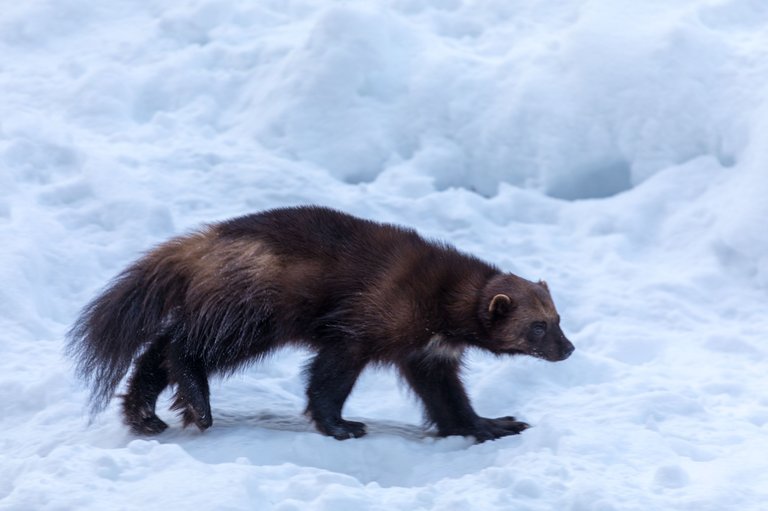
Credit: Ninara from Helsinki, Finland. Used under CC 2.0.
A few weeks ago I came across an article about wolverines. I'd heard the name used before, especially in reference to a comic book/movie character.
YouTube video featuring the Wolverine character:
There is also a combat vehicle named the Wolverine:
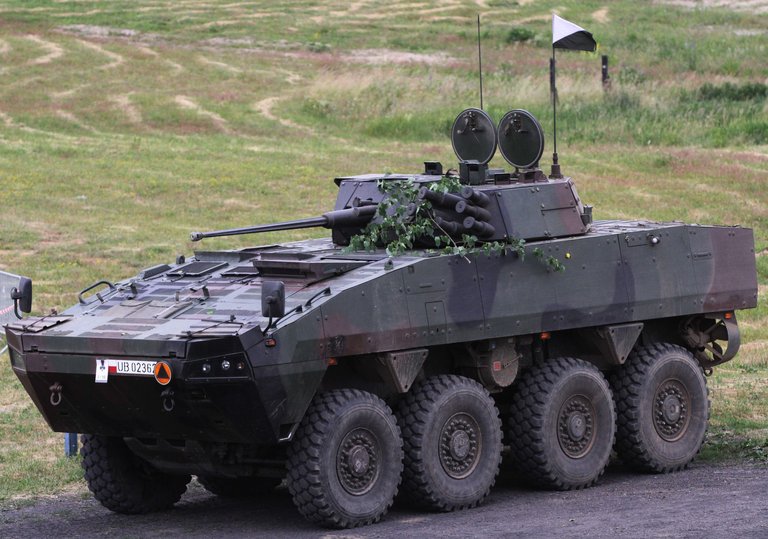
Credit:Spc. Robert Douglas, Michigan Army National Guard.Public domain
However the animal wolverine, namesake for combat vehicle and comic book character, was largely unknown to me. It turns out there is a paucity of information on this mammal. The wolverine is elusive and Western science has accumulated little research on this, the largest land-dwelling animal in the weasel family. Much of the information available comes from Arctic Indigenous Peoples, who "demonstrate a refined and complex appreciation of wolverine biology".
The wolverine is an arctic animal, one of several species that depend on either snow or ice to survive. In the specific case of the wolverine, the female needs a snow depth of at least six feet to to build a den for her offspring, called kits, or cubs.
Wolverine Distribution
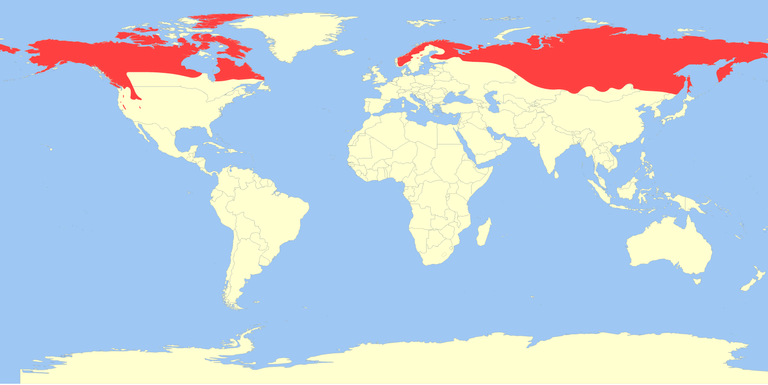
Credit: Oona Räisänen & IUCN (International Union for Conservation of Nature) IUCN Red List of Threatened Species, species assessors and the authors of the spatial data. Used under CC 3.0 license
The retreating snow pack on the planet has endangered the survival of this animal. Recently, the U.S. government placed the wolverine in a "threatened species" class of animals. It is believed that not more than 300 wolverines live in the lower 48 states of the U. S. It is feared these few remaining wolverines may not survive. Pressures from habitat loss and human incursion (recreation and being ensnared in traps set out for wolves) are the chief threats.
Wolverine Lair in the Snow
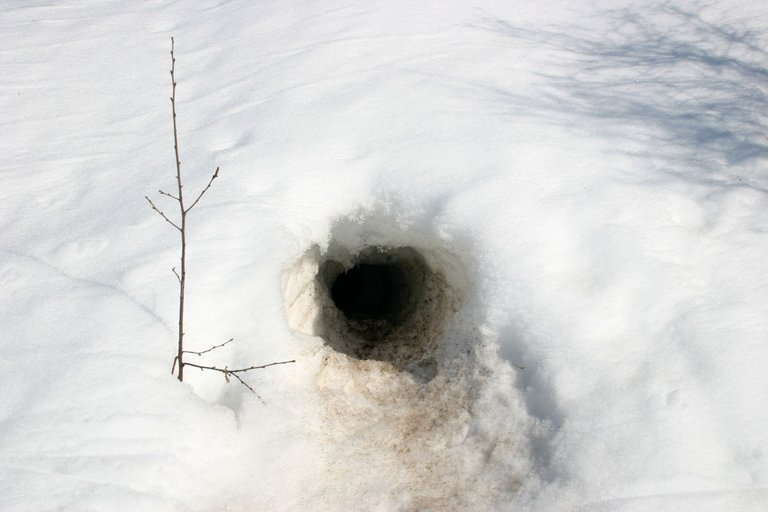
Credit: Ernst Vikne. Used under CC 2.0 license
The female wolverine raises her young alone. One of the reasons for the poor survival prospects of this animal is its low reproduction rate. A female may reproduce at two years old, but usually the litter will not survive until the female is two and half years old. She has a small litter, on the average two to three kits per birthing. She may reproduce every year, but it seems she may not live long. Most wolverines in the wild die between the ages of five and seven, although their natural lifespan could be as long as thirteen years if they weren't killed or didn't starve to death.
Drawing of Wolverine (With Two Kits?)
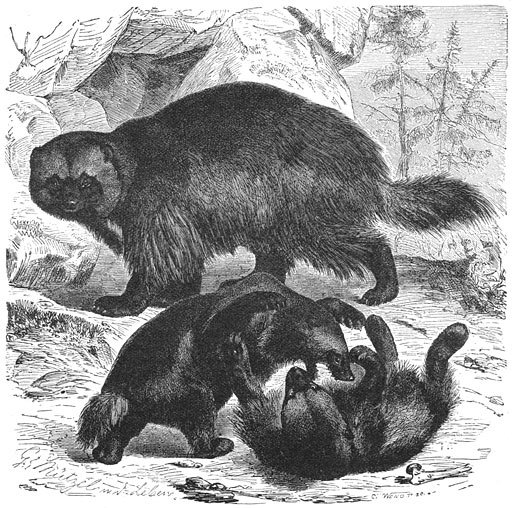
Credit: Drawing is by Alfred Brehm and is taken from his book, "Brehm's Life of Animals", 1895. A notation from that book:This animal, which is found in the cold northern regions of Europe, Asia and America, receives its name (Glutton) from the earlier belief that it was abnormally voracious, but it does not appear to deserve its title. It is a very fierce hunter, however. (It) kills animals of all sizes from the Mouse to the Elk. It is a clumsy but powerful animal with a coarse fur which is long and shaggy, except on the snout." Public domain.
The wolverine is not only a ferocious hunter (which is probably why a comic book character and combat vehicle carry its name), but is also categorized as a scavenger. In the winter, it will derive its diet largely from carrion. The animal plays a valuable role in the ecosystem as both predator and scavenger.
Wolverine Feeding on the Skeletal Head of a Large Animal
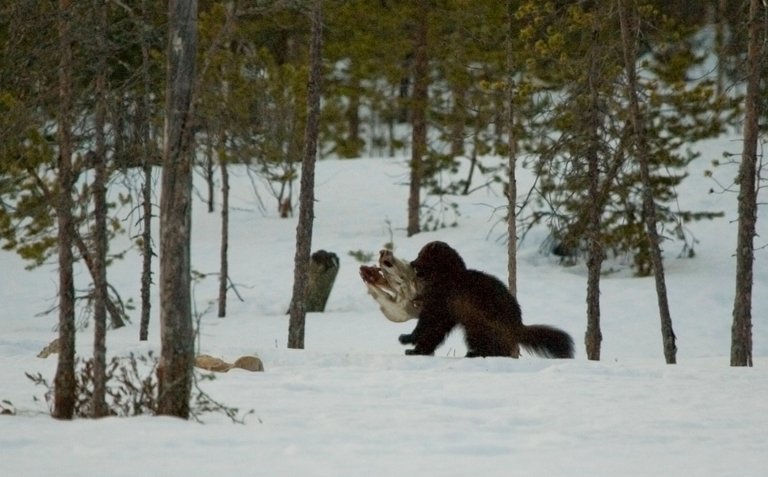
Credit: Kallerna. Public domain. According to the Alaska Department of Fish and Game: "The wolverine has a powerful jaw and large neck muscles allowing it to crush and utilize bones and frozen flesh".
Apparently, wolverines are not only ferocious, but also clever. One article I discovered on the Animal Diversity Web describes how wolverines are regarded as pests in some parts of Scandinavia. There the animals prey on domestic reindeer and steal food from traps. They also can bite into canned goods. Trapping wolverines, however, is a challenging exercise.
Wolverines thwart trappers in several ways. According to the Animal Diversity Web article, "...when a wolverine finds a trap, it may spring it by turning it upside down or by dropping a stick into it." They may also, "carry traps away and bury them deep in the snow".
While many of us (me certainly) may dread the coming of a snowstorm and the ice that often follows, snow and ice are essential to the life cycle for many animals and plants. A warming planet, with accompanying reduction in snow and ice cover, will have direct and indirect consequences on various life forms. Here are a few species that are known to be affected. There are many more, and no doubt many that will be indirectly affected.
Polar Bear (Ursus maritimus) Out at Sea, on an Ice Floe
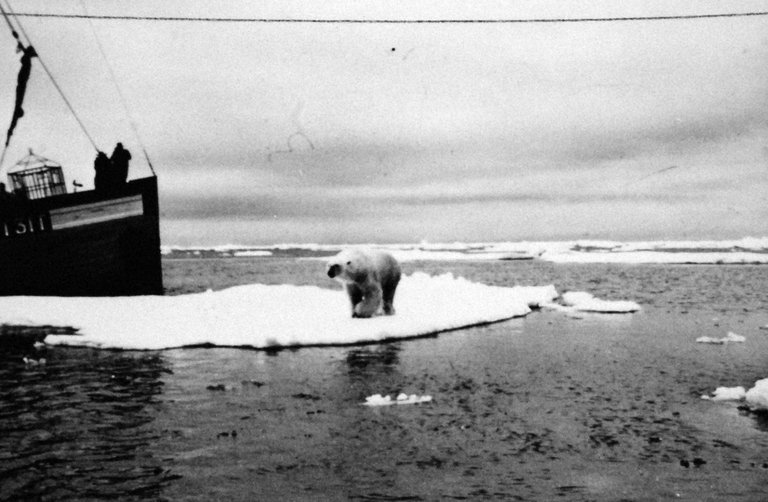
Credit: National Museum of the U. S. Navy. Public domain
Polar bears need sea ice to survive. They use the ice as a platform when they hunt seals. The more the ice melts, the further out the polar bear has to swim from land in order to hunt. While polar bears are excellent swimmers, there is actually the danger that a polar bear may drown if it has to swim too far.
Not only is there a risk of drowning but more swimming means more energy used and a greater need for food. Plus, although adults may survive the long swim, cubs may perish.
- Emperor penguins (Aptenodytes forsteri) need ice to survive. They breed on ice. They also need to live on ice when they moult in January and February of every year. During the moult, their wings are no longer waterproof and they cannot swim. A scientist associated with the British Antarctic Survey suggests that some colonies of Emperor penguins "may not survive in the coming decades".
Emperor Penguins
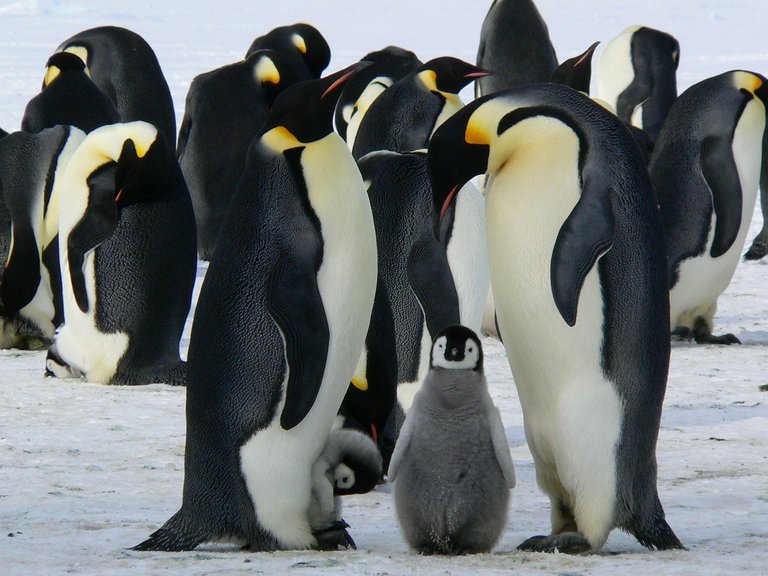
Credit MemoryCatcher. CC 1.0
- Black Guillemots (Cepphus grylle):
This seabird nests on the edge of sea ice and hunts in the ice for cod. Greater distances between the nesting area and the ice has led to a reduction in breeding pairs. The further away from the ice the bird nests, the greater the reduction in breeding pairs.
Black Guillemot
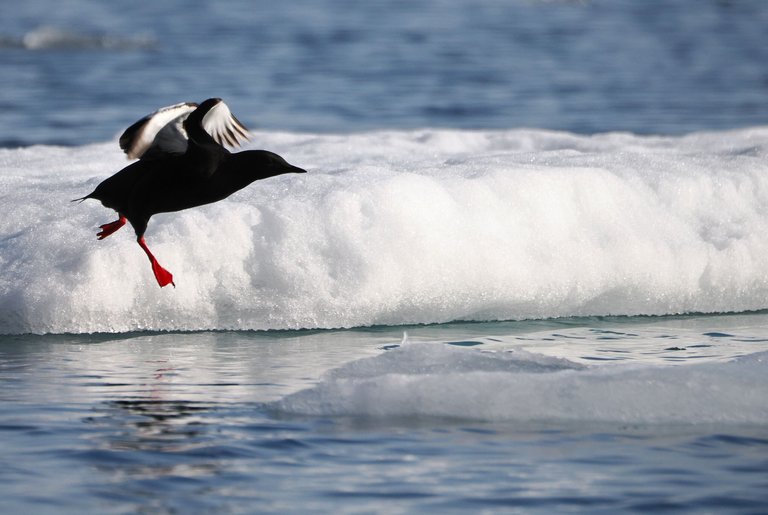
Credit:https://www.inaturalist.org/photos/311711384. CC 1.0
As an illustration of an indirect effect of reduced ice/snow cover, note the incursion of the horned puffin into the Black Guillemot's territory. As horned puffins are driven north by receding ice, they are appropriating the Black Guillemot's nesting area and feeding on the Black Guillemot's chicks. This incursion of the puffin has further eroded the Black Guillemot population.
Horned Puffin (Fratercula corniculata)
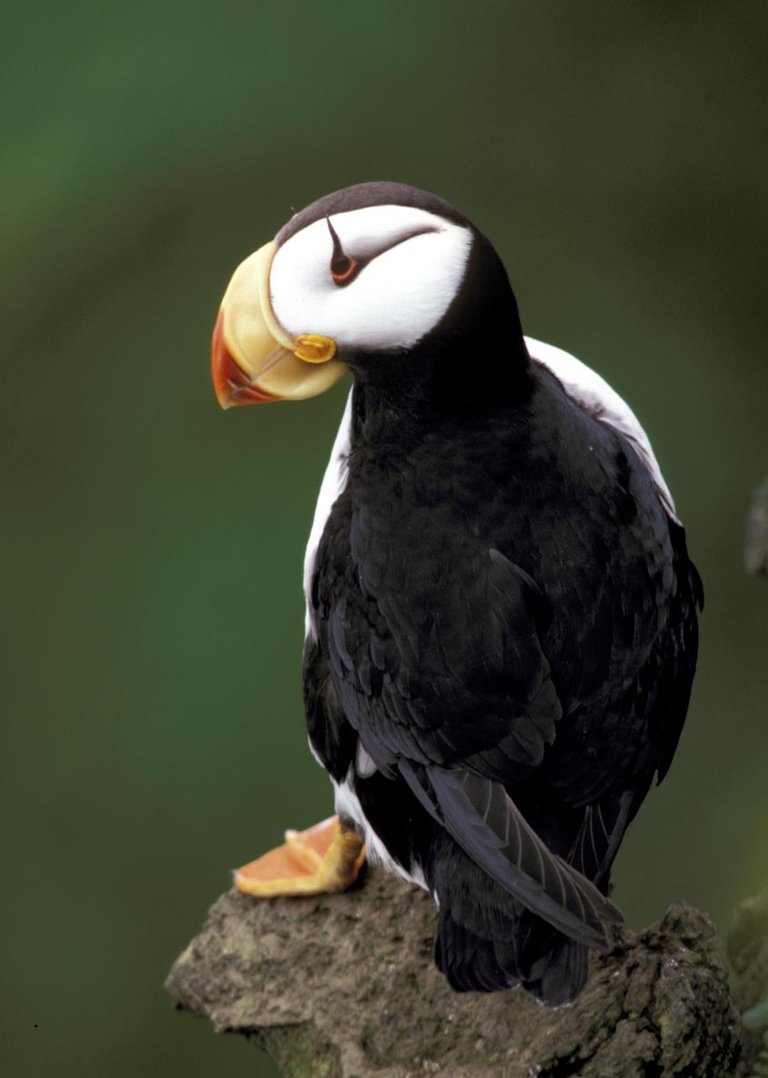
Credit: Vernon Byrd, USFWS. Public domain.
Conclusion
When I began to do research for this blog, my intention was to write about the wolverine. However, as I learned about this animal's breeding habits and its need for snow in order to den, I became interested in the larger issue. Breeding in snow, or on ice, seems counterintuitive, for me, as a human. But it is an adaptation for many life forms. As is hunting on ice.
I live on an island, (well, technically a peninsula) and so for me a warming planet means stronger storms and increased chance of flooding. There is another reality out there, the reality of those animals who need ice and snow to survive. As their ice and snow melts and inundates my community, it takes from them the very means of survival.
I hope you found the blog interesting. Thank you for reading.
Selected Sources
https://pdxscholar.library.pdx.edu/cgi/viewcontent.cgi?article=1203&context=esm_fac
https://www.ncbi.nlm.nih.gov/pmc/articles/PMC9440465/
https://www.nwf.org/Educational-Resources/Wildlife-Guide/Mammals/Wolverine)
https://www.npr.org/2023/11/29/1215814026/wolverines-climate-change-protection-threatened-species
https://insideclimatenews.org/news/01122023/wolverines-listed-as-threatened-may-be-decades-too-late/
https://www.sierraclub.org/sierra/biden-administration-provides-lifeline-threatened-wolverines
https://wolverinefoundation.org/reproduction
https://www.adfg.alaska.gov/index.cfm?adfg=wolverine.printerfriendly
https://commons.wikimedia.org/wiki/File:Brehm%27s_Life_of_animals_(Page_167
https://commons.wikimedia.org/wiki/File:Brehms_Het_Leven_der_Dieren_Zoogdieren_Orde_4_Veelvraat_(Gulo_borealis).jpg
https://animaldiversity.org/accounts/Gulo_gulo/
https://www.aurora-expeditions.com/blog/arctic-sea-ice-day/
https://www.scientificamerican.com/article/too-late-for-polar-bears/
https://oceanographicmagazine.com/news/antarcticas-emperor-penguins/
https://www.epa.gov/climate-indicators/closer-look-black-guillemots-cooper-island
https://www.jstor.org/stable/4161647
!ALIVE
!LOL
@agmoore! You Are Alive so I just staked 0.1 $ALIVE to your account on behalf of @ cryptoyzzy. (6/10)
The tip has been paid for by the We Are Alive Tribe through the earnings on @alive.chat, feel free to swing by our daily chat any time you want, plus you can win Hive Power (2x 50 HP) and Alive Power (2x 500 AP) delegations (4 weeks), and Ecency Points (4x 50 EP), in our chat every day.

lolztoken.com
He could never reach the city limit.
Credit: reddit
@agmoore, I sent you an $LOLZ on behalf of cryptoyzzy
(3/8)
Delegate Hive Tokens to Farm $LOLZ and earn 110% Rewards. Learn more.
Thank you🌷
In your publications we always learn something my dear friend. I did not know about this little friend, and I was never curious to investigate where the name of the character Wolverine derives from, it is true that there is little information about this animal.
I like to watch documentaries about animals that live in the ice, I have seen many about polar bears, seals, penguins, narwhals, etc. but never about this one.
The melting of the ice sheets is a serious problem for all these animals, sometimes I think there is no going back with that issue. I think these animals will have to adapt to continue to exist. Hopefully only I am a pessimist and time will show me otherwise.
Good read my friend. Hope you have a nice week!🌺
Thank you my dear friend, @mballesteros! I only write a about subjects that interest me, subjects that I want to learn about. It would be boring to just write about what I know.
I love nature documentaries, also. Sometimes I watch them when I go to sleep and they help me to drift off. Never documentaries about animals that kill, though. Don't want those images in my head when I dream 😄 Nature, and vegetarian animals only !!
I hope you are finding time to rest and relax. What you have done, moving and starting over, is really admirable. You are in a sense a pioneer, forging a new path. Be well my friend and have a great week.
♥️🌷♥️
Thanks for your contribution to the STEMsocial community. Feel free to join us on discord to get to know the rest of us!
Please consider delegating to the @stemsocial account (85% of the curation rewards are returned).
Thanks for including @stemsocial as a beneficiary, which gives you stronger support.
Thank you for the support, @stemsocial
This is saddening.
Just realizing that I have read about the wolverine before, although the comic character is loads more popular than the animal itself.
I actually didn't know about its breeding habit.
A nest on ice? Is it that the cubs overheat or?...
Oh well, I doubt the world is going to get any colder anytime soon as the UV rays keep on increasing.
To save the diminishing arctic region.
The world needs a serious wake up call...
It seems peculiar to us that they den in snow. It is said the female needs 6 feet. But then, I'll bet the wolverine would be confused by our mattresses and beds ;))
No. The world is not getting colder. Those animals will have to adapt, as we will, or perish.
Thank you for stopping by.
Very interesting read! I didn't know that an actual animal named wolverine existed before. Considering the larger issues of the planet sheds light on how interconnected and interdependent we all are. Snow and ice is important for the survival of these species.
Thank you! The wolverine is a fascinating animal and I may revisit it in another blog. Have a great week, @takhar
I definitely agree! They're clever creatures too.
You're most welcome!
I have taken my time to study about animals that existed before but I didn’t know about wolverine
Thank you very much for sharing with us
I’m glad!
Do wolverines actually exist real life or it is a Superstition?
The wolverine can be categorised as one of the carnivorous animal
You have raised a valid point. It was saddened to see that instead of wolverine other things names are shown or promoted in the media. Such kind of animals are in danger due to global warming.